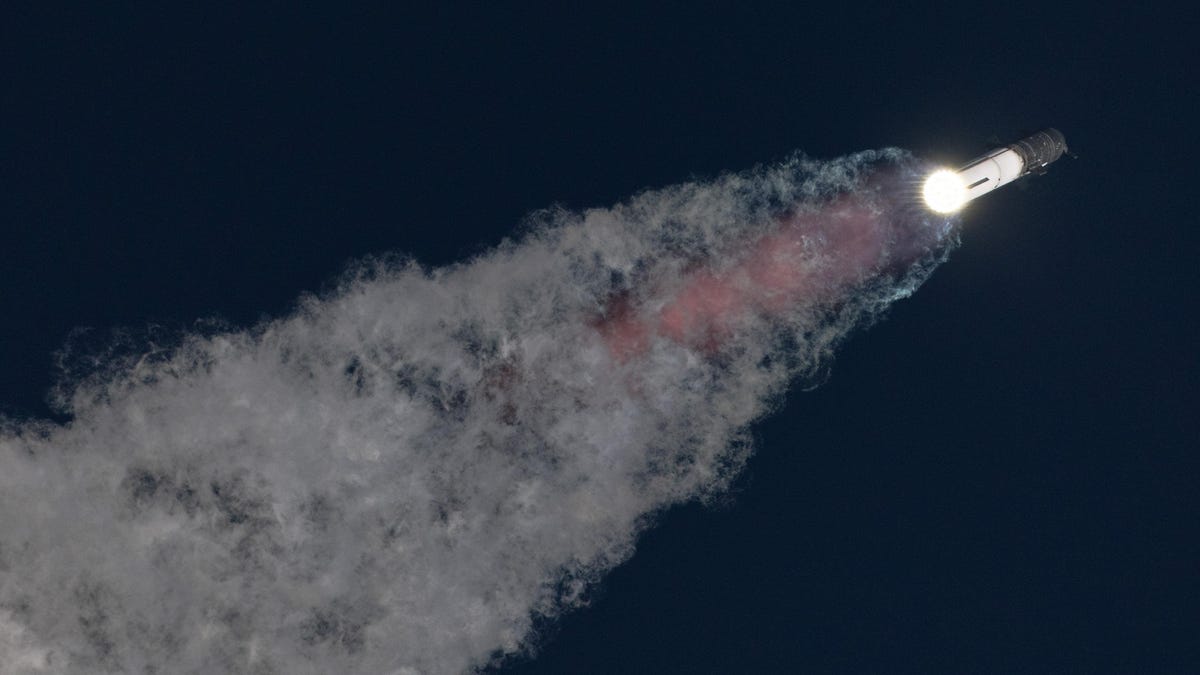SpaceX is actively preparing for the third test of its Starship launch system, a mission that may feature the inaugural attempt at in-flight propellant transfer. This capability is essential for enabling deep space missions and is a crucial component of NASA’s Artemis Moon plans.
The demo, though preliminary in nature, would require Starship to boldly go where no Starship has gone before: low Earth orbit. NASA spokesperson Jimi Russell confirmed the test of the orbital refueling technology in a statement to CNBC. “NASA and SpaceX are reviewing options for the demonstration to take place during an integrated flight test of Starship and the Super Heavy rocket,” the spokesperson said, but “no final decisions on timing have been made.”
The upcoming test follows the second Starship test flight on November 18, which, despite the explosion of both stages, achieved significant milestones, including the first demonstration of a new hot-staging maneuver to smoothen stage separation. Getting the nearly 400-foot-tall rocket to space is proving to be tough enough, but the upper stage, while in orbit, will eventually need to be refueled for missions beyond Earth. This challenge involves maintaining cryogenic temperatures for liquid methane and oxygen and overcoming the hurdles of microgravity fuel transfer.
Related article: What’s Next for SpaceX’s Starship After Explosive Second Launch
SpaceX, under a $53.2 million “Tipping Point” contract with NASA, signed in 2020, plans to use Starship tankers for in-orbit propellant transfer, an approach akin to aerial refueling. The upcoming demonstration involves transferring 10 metric tons of liquid oxygen within Starship itself, from one tank to another, and on a scale unprecedented in space operations. This test, however, will not include a rendezvous with another tanker spacecraft, as NASA considers it a step towards developing the requisite technology, as CNBC reports.
The space agency and its partners are seeking to develop technologies to “enable long-term cryogenic fluid management, which is essential for establishing a sustainable presence on the Moon and enabling crewed missions to Mars,” NASA said when the contract was signed. “Implementation of the technologies in operational missions requires further maturation through in-space demonstrations.” Eta Space, Intuitive Machines, Lockheed Martin, and United Launch Alliance were also awarded their own Tipping Point contracts to develop similar technologies.
The journey of SpaceX’s Starship to the Moon, as envisioned by NASA, will involve a complex and meticulously planned series of events, as Payload explained in a recent post. Initially, SpaceX is expected to launch between 8 and 16 propellant tanker Starships into low Earth orbit in rapid succession. Each of these tankers will carry a substantial payload of fuel, ranging from 100 to 150 tons of liquid oxygen and liquid methane. Upon reaching orbit, these tankers will dock with a larger fuel depot, transferring their cargo to it. This orbiting depot plays a critical role, as it will then connect with the Human Landing System (HLS) Starship, effectively filling its massive 1,200-ton fuel tanks. Once refueled, the Starship lander will commence its journey toward the Moon, preparing for its lunar landing. Adding to the complexity of this mission, NASA and SpaceX are faced with the challenge of addressing the cryogenic boil-off problem, a critical aspect to ensure the success and viability of the entire operation.
The Starship program, integral to SpaceX’s $2.9 billion contract with NASA for the Artemis 3 human landing system, has faced scrutiny over its progress and timelines. The Government Accountability Office (GAO) recently expressed concerns about the slow rate of Starship development, suggesting that the Artemis 3 mission, initially planned for 2025, might be delayed until 2027.
The propellant transfer demo will add a new dimension to the third Starship launch, pushing the program far beyond its current achievements. While SpaceX CEO Elon Musk has optimistically projected a quick turnaround for the third flight (on the order of several weeks), it’s more reasonable to project a launch in early 2024, following the obligatory post-mission review by the Federal Aviation Administration and SpaceX due to the anomalies experienced during the second flight.
Want to know more about humanity’s next giant leap in space? Check out our full coverage of NASA’s Artemis Moon program, the new Space Launch System (SLS) rocket and Orion spacecraft, the recently concluded Artemis 1 mission around the Moon, the four-person Artemis 2 crew, NASA and Axiom’s Artemis Moon suit, and the upcoming lunar Gateway space station. And for more spaceflight in your life, follow us on X (formerly Twitter) and bookmark Gizmodo’s dedicated Spaceflight page.

